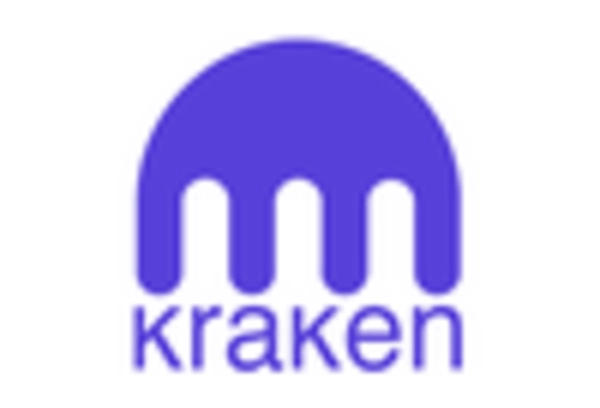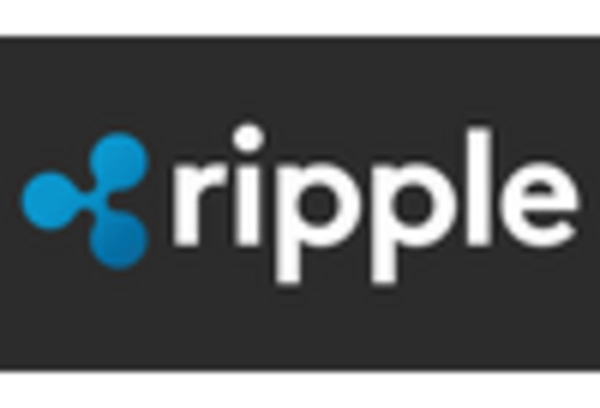Increased Focus on Cybersecurity
As the blockchain fintech market in APAC expands, the focus on cybersecurity has intensified. With the rise of digital transactions, the potential for cyber threats poses significant risks to financial institutions and their customers. Consequently, there is a growing emphasis on developing robust security measures to protect sensitive data and maintain trust in blockchain applications. Investments in cybersecurity solutions are projected to reach $2 billion by 2026, as companies seek to safeguard their operations against potential breaches. This heightened focus on security not only protects users but also enhances the overall credibility of the blockchain fintech market. As a result, companies that prioritize cybersecurity are likely to gain a competitive edge, fostering greater adoption of blockchain technologies across the region.
Growing Demand for Financial Inclusion
The blockchain fintech market in APAC is experiencing a surge in demand for financial inclusion, particularly among unbanked and underbanked populations. With approximately 1.7 billion adults globally lacking access to basic financial services, the region's innovative blockchain solutions are poised to bridge this gap. By leveraging decentralized technologies, financial institutions can offer affordable and accessible services, such as microloans and digital wallets, to underserved communities. This trend is likely to drive the adoption of blockchain-based platforms, as they provide secure and transparent transactions. Furthermore, the potential for lower transaction costs, estimated to be reduced by up to 50%, enhances the appeal of blockchain fintech solutions. As a result, the industry is expected to witness significant growth, with a projected market size reaching $10 billion by 2027.
Emergence of Innovative Payment Solutions
The emergence of innovative payment solutions is transforming the blockchain fintech market in APAC. With the increasing adoption of digital currencies and blockchain-based payment systems, consumers are seeking faster, more efficient transaction methods. The rise of cross-border payments facilitated by blockchain technology is particularly noteworthy, as it reduces transaction times from days to mere minutes. This efficiency is appealing to businesses engaged in international trade, potentially increasing transaction volumes significantly. Market analysts project that blockchain-based payment solutions could capture up to 30% of The blockchain fintech market by 2028. As a result, the blockchain fintech market is likely to experience substantial growth, driven by the demand for seamless and cost-effective payment alternatives.
Rising Interest from Institutional Investors
Institutional investors are increasingly recognizing the potential of blockchain technology within the fintech market in APAC. This interest is driven by the desire for diversification and the pursuit of higher returns in a low-interest-rate environment. Reports indicate that institutional investment in blockchain-related assets has surged, with allocations reaching approximately $5 billion in 2025. This influx of capital is likely to enhance the credibility and stability of blockchain projects, attracting more participants to the market. Furthermore, as institutional players engage with blockchain fintech solutions, they may drive the development of regulatory frameworks that support the industry's growth. Consequently, the blockchain fintech market is expected to evolve, with a more robust infrastructure and increased legitimacy, fostering further innovation and adoption.
Technological Advancements in Blockchain Solutions
Technological advancements are playing a pivotal role in shaping the blockchain fintech market in APAC. Innovations such as smart contracts, interoperability, and enhanced security protocols are driving the development of more sophisticated blockchain applications. These advancements enable financial institutions to streamline operations, reduce fraud, and improve customer experiences. For instance, the integration of artificial intelligence with blockchain technology is enhancing data analytics capabilities, allowing for better risk assessment and fraud detection. As a result, the market is witnessing an influx of investment, with funding for blockchain startups in APAC reaching $3 billion in 2025. This influx of capital is likely to accelerate the pace of innovation, further solidifying the region's position as a leader in the blockchain fintech market.

















Leave a Comment